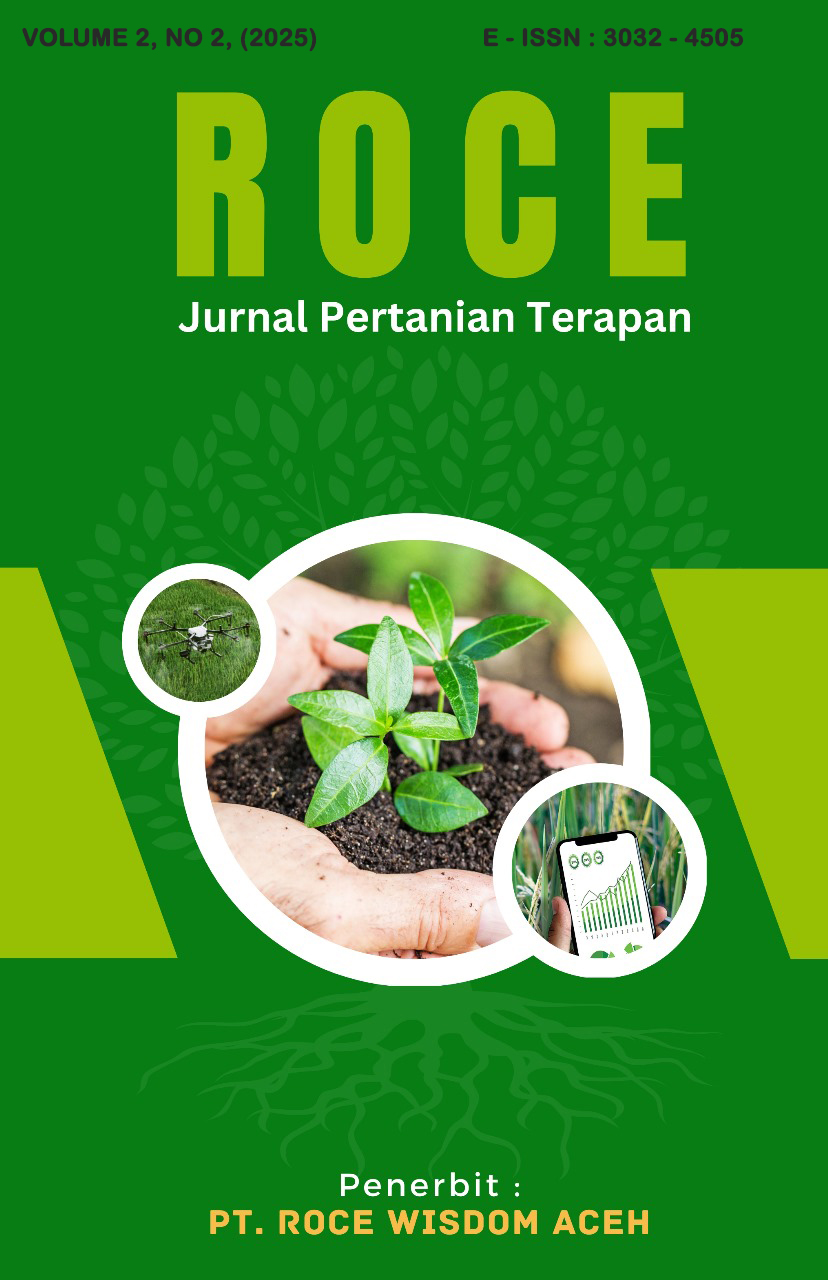FORMULATION OF OINTMENT FROM METHANOL EXTRACTS OFSENGGANI LEAVES (Melastoma malabathricum L.) WITH VARIATION OF OINTMENT BASE
FORMULASI SALEP DARI EKSTRAK METANOL DAUN SENGGANI(Melastoma malabathricum L.) DENGAN VARIASI BAHAN BERBASIS SALEP
DOI:
https://doi.org/10.71275/roce.v2i2.126Keywords:
Ointment base , antibacterial, senggani leaf, Melastoma malabathricum LAbstract
Senggani (Melastoma malabatrichum L.) is a traditional medicinal plant. The chemical content, including saponins, tannins, flavonoids, quinones, and steroids, in senggani leaves provides antibacterial effects. Ointment preparations are semi-solid preparations that are used for the outside of the body by applying to the outside of the body in the affected area. This study is experimental, aiming to determine the physical characteristics of ointments from the methanol extract of senggani leaves using a variety of ointment bases, namely hydrocarbon ointment base (F1), absoprsi (F2), water-washed (F3), and water-soluble (F4). Evaluation of ointment preparations in each formula includes
Organoleptics, Homogeneity, pH, and Scatter. The results of the study of ointment preparations from
formulas in the form of semi-solid odor typical of seggani and blackish green (F1, F2, F4) and light
green (F3). Ointment preparations show homogeneous properties, with pH levels of 4.8 (F4), 5.0 (F3),
and 6.1 (F2 and F1). The results showed that ointment preparations of methanol extract of senggani
leaves that met the test requirements were only F2 and F3.
Downloads
References
Anief, M. (2013). Medicinal Science, Gadjah Mada University Press, Yogyakarta.
Arif, M. Z. (2016). Ointment Formulation of Ethanol Extract of Krinyuh Leaf (Eupatorium odoratum L.).
Depkes RI. (1995). Indonesian Pharmacopoeia IV Edition. Jakarta.
Dalimartha, S. (1999). Atlas of Indonesian Plants volume I, Jakarta.
Gunawan D, Mulyani, S. (2004). Natural Medicinal Science. Bogor: Penebaran swadaya.
Hasibuan, S. A. (2016). Comparison of Inhibitory Power of Jatropha curcas Leaf Extract (Jatropha curcas L.). And Eshericia coli In Vitro. Thesis, Medan; Faculty of Pharmacy, University of. North Sumatra
Hariaman, A. (2008). Medicinal Plants and Their Efficacy, Jakarta. Penebar swadaya
Kurnia, Nani dkk. (2014). Atlas of South Sulawesi Plants, Department of Biology, Faculty of Mathematics and Natural Sciences, Universitas Negri Makassar. Makassar.
Kemenkes RI. 2010. Indonesian Herbal Pharmacopoeia, Jakarta.
Liana, I., Astirin, P.O and Retraningtyas, .E. (2015). Antimicrobial activity of fraction from methanolic extract of senggani (Melastoma candidum) leaves towards Staphylococcus aureus and Sa. typhimurium and thin layer chromatography profile of the most active fraction. Jurnal Biofarmasi, Vol. 13, No. 2, pp. 66-77.
Magfinaroh, Fika. (2015). Activity Test of 70% Ethanol Extract of Senggani Leaves (Melastoma malabathricum L.) Against Bacterial Colony Inhibition in Beef. Samarinda
Naibaho, H.O., Yamlean, Y. V. P., Wiyono, W. (2013). Effect of Ointment Base on the Formulation of Ointment Preparations of Basil Leaf Extract (Ocimum sanctum L.) on the skin of Rabbit's Back Skin made by Staphylococcus aureus infection. Pharmacy Study Program, FMIPA UNSRAT. Manado.
Rita, N. (2017). Ointment Formulation of Pliek U Ethanol Extract as Antibacterial. Poltekkes Kemenkes Aceh, Aceh Besar.
Sari, et all. (2016). Formulation of Ointment of Ethanol Extract of Turmeric Rhizome (Curcuma loga Linn). Poltekkes Kemenkes Aceh, Aceh Besar
Syamsuni, H. A. (2006). Prescription Science. Jakarta; Medical Books, EGC.
Suryaningsih, E. A, Mulyani, S and Retraningtyas, E. 2008. Antibacterial Activity of Coumpound Active Components of Senggani Leaves (Melastoma malabatricum D.Don). Againts Bacillus Licheniformis. Department of Biology FMIPA Sebelas Maret University.
Titi, dkk. (2007). Antibacterial Effects of Extracts and Fractions of Senggani Leaf Extract (Melastoma malabatricum L.). Against Staphylocococcus aureus, Eschericia coli, and Bacillus aureus By Agar Diffusion Method. Farmaka. 5(3).
Downloads
Published
Issue
Section
License
Copyright (c) 2025 Rina Kurniaty, Salimatun Nahar, Ika Rezvani Aprita (Author)

This work is licensed under a Creative Commons Attribution-ShareAlike 4.0 International License.













